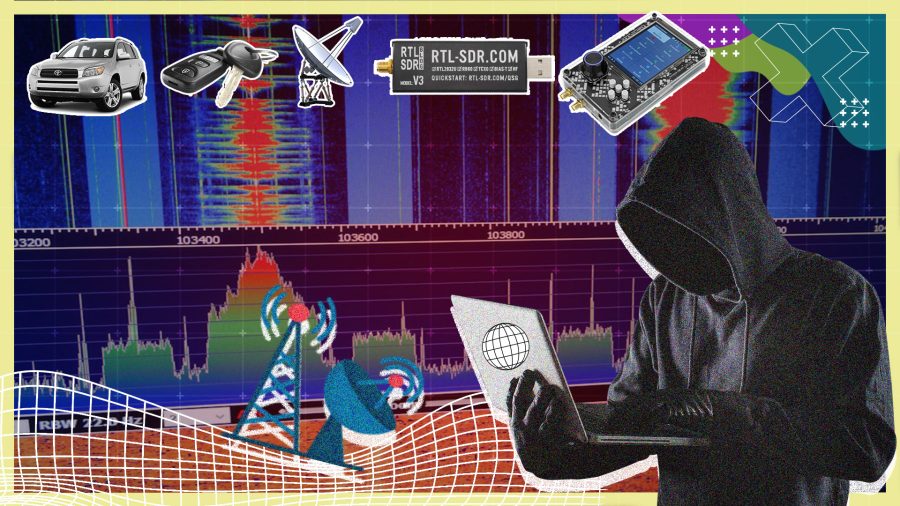Are you ready to dive into the fascinating world of Software Defined Radio (SDR) and gain skills that are shaping the future of communications? Whether you’re a hobbyist, engineer, or tech enthusiast, our course will empower you to understand and master SDR. Here’s why this course is your best choice for learning SDR and its applications.
Software Defined Radio is revolutionizing communication systems by providing a flexible, software-based approach to signal processing. This course offers practical and theoretical knowledge, making it the perfect gateway into this exciting field.
1. Introduction to Software Defined Radio (SDR)
Learn the foundational concepts of SDR, an essential technology in modern communications.
- Key Takeaways: What SDR is, why it matters, and how it’s revolutionizing signal processing.
2. Understanding Radio and Signals
Dive into the basics of how radios work and the nature of signals.
- Key Takeaways: Explore the properties of signals, frequency, and the electromagnetic spectrum.
3. Modulation and Carrier Waves
Understand the role of modulation in transmitting data over carrier waves.
- Key Takeaways: Different modulation techniques and their applications.
4. Digital vs Analog Signals
Compare and contrast digital and analog signals to grasp their practical applications.
- Key Takeaways: Advantages, disadvantages, and use cases of each signal type.
5. Getting Started with GNU Radio (No Hardware Needed)
Set up and explore GNU Radio, a powerful tool for SDR.
- Lessons:
- Installing GNU Radio on Linux, Windows, or macOS
- Introduction to workspace and blocks
- Understanding sources and sinks
- Key Takeaways: Hands-on experience with software setup and basic block functions.
6. Simple Project with GNU Radio (No Hardware Needed)
Begin building flowgraphs and manipulating signal properties.
- Lessons:
- Designing flowgraphs
- Adjusting properties and using multipliers
- Key Takeaways: Learn to visualize and modify signal flows.
7. Building an AM Receiver (No Hardware, Radio File Only)
Simulate radio signals and create an AM receiver using recorded data.
- Lessons:
- Configuring the QT GUI
- Using a recorded file source to simulate real radio signals
- Key Takeaways: Practical application of signal processing concepts.
8. Understanding Signal Processing
Explore foundational concepts of signal processing, including frequencies and transformations.
- Lessons:
- Frequency creation and sinusoidal waveforms
- Fast Fourier Transform (FFT) with examples
- Merging complex signals and working with real-world sounds
- Key Takeaways: The building blocks of analyzing and manipulating signals.
9. Filters and Gains
Learn how filters and gains shape and enhance audio and radio signals.
- Lessons:
- Gain and decibel theory
- Introduction to filters and pass filters
- Creating equalizers and exploring different sample rates
- Key Takeaways: Understanding signal enhancement and filtering techniques.
10. Understanding AM Receivers
Dive deeper into AM receivers and the technical concepts behind them.
- Lessons:
- Radio tuning theory and frequency shifting
- RF tuning, demodulation, and decimation
- The throttle block and course wrap-up
- Key Takeaways: Advanced understanding of AM radio operations.
11. Practices with Software Defined Radio
Practical hands-on exercises with SDR hardware and software.
- Lessons:
- Overview of RTL-SDR and HackRF models
- Setting up SDR++ software
- Exploring SDR++ features and mastering its interface
- Key Takeaways: Get comfortable with SDR hardware and software.
12. Advanced: GSM (Global System for Mobile Communications)
Deep dive into GSM technologies and signaling systems.
- Lessons:
- Cellular networking history and standards
- Signaling System Number 7 (SS7) and its role in GSM
- HLR, VLR, and IMSI concepts
- Key Takeaways: Foundational GSM knowledge, including SS7 and core network components.
13. GSM – Understanding Base Station Subsystem and Voice Processing
Learn about GSM’s base station components and voice processing methods.
- Lessons:
- Base station subsystem (BSS) and transceiver stations
- TDMA, GSM airframes, and mobility management
- Key Takeaways: Core concepts of how GSM networks handle calls and mobility.
14. GPRS and EDGE
Understand the enhancements provided by GPRS and EDGE technologies.
- Key Takeaways: How these technologies enable faster data transmission on GSM networks.
15. LTE (Long Term Evolution)
Comprehensive overview of LTE networks and their advanced features.
- Lessons:
- LTE network architecture and components
- Key roles of MME, PDN-GW, S-GW, and HSS
- OFDM(A), SC-FDMA, QAM, and LTE cell search processes
- Key Takeaways: Advanced understanding of LTE technology and its evolution from GSM.
Software Defined Radio Masterclass (Start NOW !)




